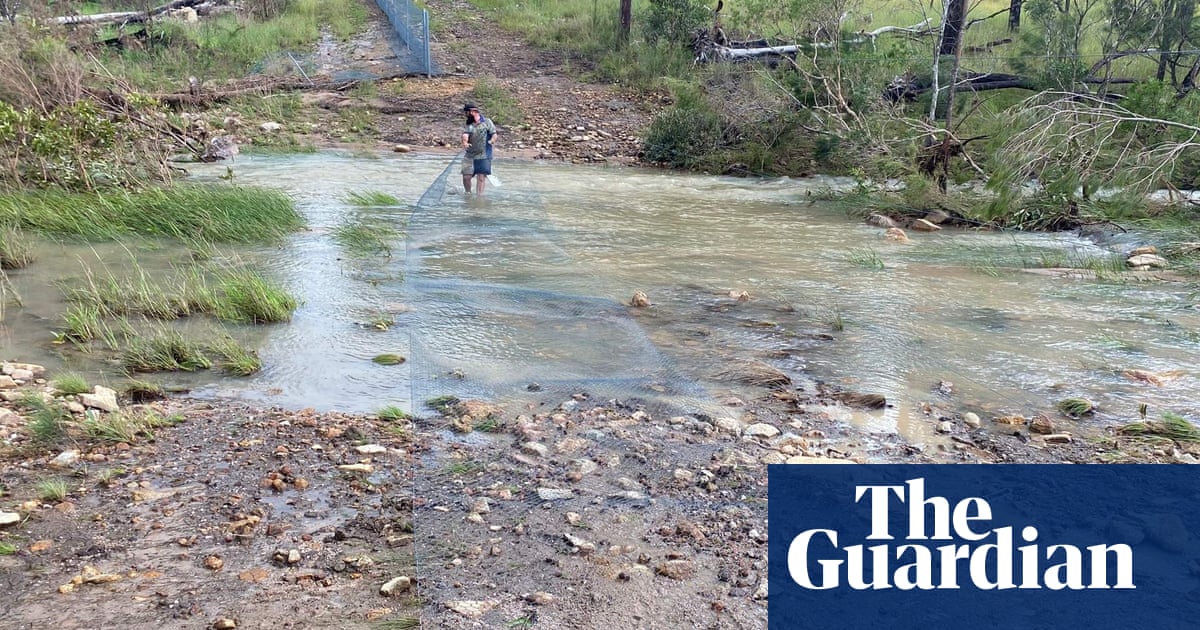When heavy monsoonal rain was forecast in north Queensland at thebeginning of February, Josh McAllister and his family headed to Townsville to stock up on supplies.
As the rain came down, his partner and kids did the bolt to home on AustralianWildlifeConservancy’s (AWC) Mt Zero-Taravale wildlife sanctuary, 80km to the north-west, taking with them the groceries. McAllister stayed in town to complete a few jobs.
By the time McAllister reached Mt Zero-Taravale later the same day, the road to the house was cut with flood water. Making it to a shed on the property he jumped in a side-by-side buggy and went cross-country, only to find these tracks, too, were cut by rising water. He returned to the shed.
“I had grabbed a salad roll and a bag of Doritos before I left town and that’s all the food I had,” McAllister says.
Scrounging around in the back of his ute he added six small tins of tuna to his supplies. “I found some hessian bags that we use for animal traps and laid them on a work bench for a bed, and I figured I could go without food for a week. I had shelter and a Starlink connection, and water wasn’t a problem, but straight away I was preparing for a potential longer-term stay.”
After three days, a break in the rain allowed McAllister to get the buggy through creeks to home.
It was the first of five major flooding events on the east coast this year, the latest of which, in northern New South Wales, killed five people,affected 10,000 propertiesanddestroyed 800 homes.
The damage at Mt Zero-Taravale is less devastating, but could spell trouble to come in protecting Australia’s native species in the most remote and changeable landscapes.
McAllister is the manager at Mt Zero-Taravale in Gugu Badhun Country, where a feral predator-proof fence protects a reintroduced population of endangered northern bettongs in a 950-hectare exclosure.
Sign up to receive Guardian Australia’s fortnightly Rural Network email newsletter
“Northern bettongs have been identified as one of the top 20 animals to go extinct in the next 10 years,” McAllister says.
AWC built the fence in 2023 with cyclones and monsoonal deluges in mind, with breakaway sections over creeks – and in February, they broke.
“Debris built up along these sacrificial sections, but they did what they were designed to do and broke away,” McAllister says. “The fence was open for a week and then we were able to get in and do temporary repairs.”
Reassuringly, the 52 cameras placed within the reserve have not detected any incursion by feral predators. The deluge has temporarily helped with weed control, flushing the lantana, a prickly flowering shrub listed as a weed of national significance, out of the creeks.
Down on Naree Station Reserve, on Budjiti Country 130km north-west of Bourke in northern NSW, the Bush Heritage Australia (BHA) ecologist Bridget Roberts has a similar tale. SES crews were air-dropping mail and supplies to her after floods inwestern Queensland in April. But Roberts considers herself lucky. “As a conservation property, we don’t have responsibilities such as moving cattle or concern about what they’re going to eat afterwards; this has been a significant disaster for a lot of people,” she says.
Like McAllister, Roberts will have fences to fix and roads and erosion to repair but she sees first-hand the ecological bounty of a big flood in channel country, especially with a three-eyed crustacean known as a shield shrimp.
Sign up toThe Rural Network
Subscribe to Calla Wahlquist's fortnightly update on Australian rural and regional affairs
after newsletter promotion
The shield shrimp, 8-9cm long, lays eggs that can survive in dry soil for more than seven years and can withstand temperatures of nearly 100C. When the rains come the eggs hatch, and the shrimp embark on a frenzied speed-breeding cycle.
“Within a day or two, they’ve moved through their larval stage and look like tiny versions of their adult self,” Roberts says. “In about two weeks, they’re at maturity and breeding. They live fast and die young because they’re basically racing the puddles. They need to complete their life cycle before the water dries out.”
In a quirk of nature, the eggs of the shield shrimp need to dry out before they can hatch. “They go into diapause, which basically means they pause development of the embryo until conditions are just right.”
The shrimp bring benefits for the environment, recycling nutrients as they gobble all in their path, and providing food for birds, which will arrive en masse for a major breeding event. Naree protects the strategic inland wetlands of the Cuttaburra Channels and Yantabulla Swamp. “There are a lot of wetlands filling now, but with any luck the birds will choose our swamp, and we’ll see them in all their glory,” she says.
BHA has properties across flood-affected parts ofQueensland, in the desert country around Boulia and Bedourie and on the Diamantina River south-west of Winton, all of which have been cut off in floods so far this year.
As floods become more common and more extreme in the climate crisis, BHA’s executive manager of science and conservation, Rebecca Spindler, says those ecosystems, which have evolved for the occasional flood, may struggle to recover.
“The extent and longevity of these floods will take more native species with them as the severity increases with climate change,” she says. “Our science helps us find properties that have natural terrain features that hold water in the dry and provide refuge in the deluge.”
Spindler says the receding waters will see predators target vulnerable wildlife and weeds flourish, requiring vigilant monitoring by reserve managers and ecologists as soon as access is possible.
Sign up for the Rural Network email newsletter
